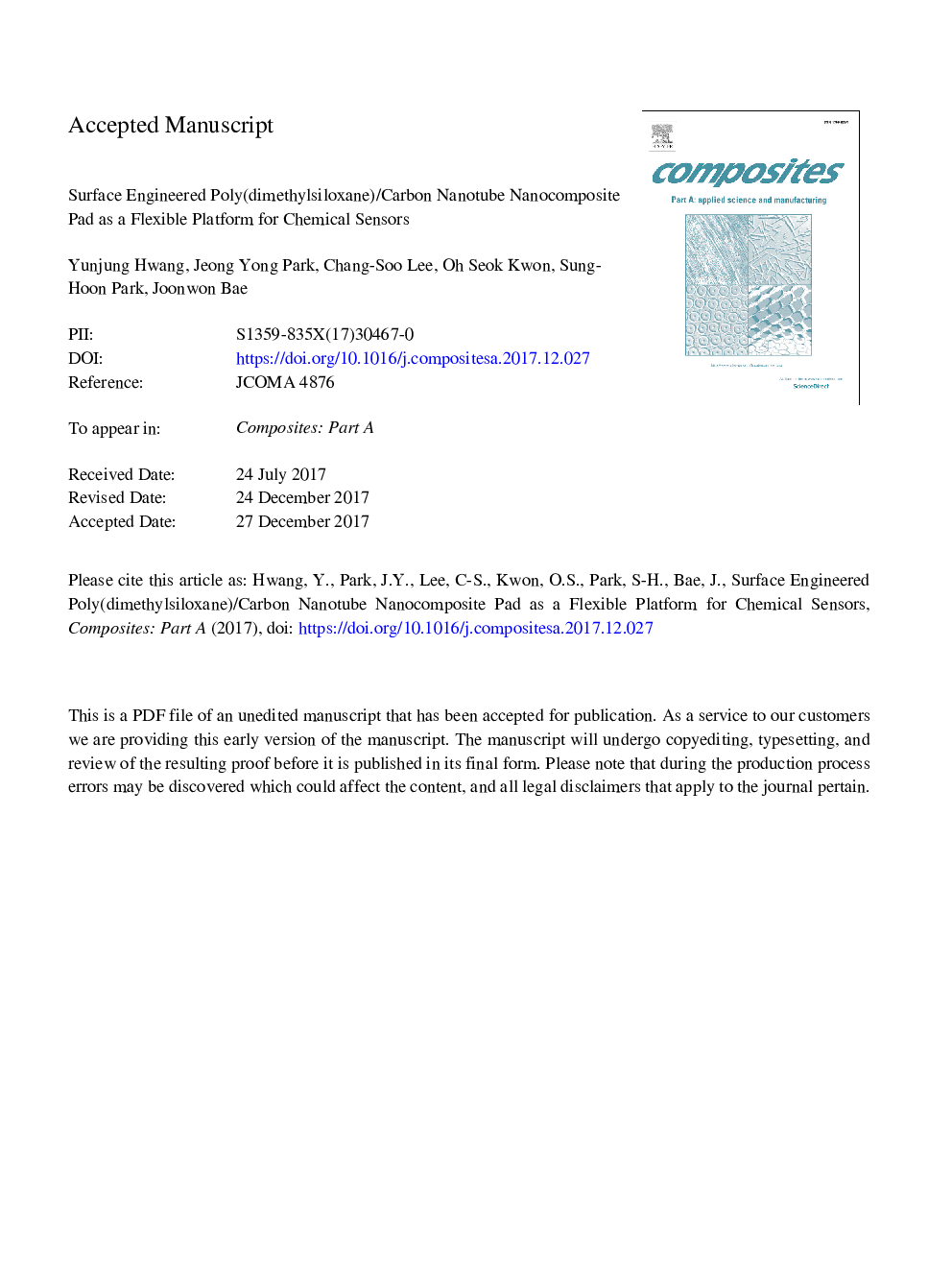| Article ID | Journal | Published Year | Pages | File Type |
|---|---|---|---|---|
| 7889601 | Composites Part A: Applied Science and Manufacturing | 2018 | 29 Pages |
Abstract
This study demonstrated the sensing performance of surface-patterned poly(dimethylsiloxane) (PDMS)/carbon nanotube (CNT: 3-5â¯wt%) nanocomposite pads. PDMS/CNT nanocomposite pads as a flexible sensing platform were prepared by employing a series of techniques: 3-roll milling for mixing, 2-roll for pad formation, and imprinting for pattern development. Then, tailored surface engineering strategy was introduced. First, the silane coupling agent was incorporated to improve the surface compatibility of the nanocomposite pads. The change in surface property was monitored by shift in contact angle from 132 to 141°. Subsequently, the beta-cyclodextrin (CD) molecules were introduced as a sensing medium through a simple bio-conjugation reaction. The nanocomposite pads showed a sensitive response to methylparaben (MePRB), a representative preservative for cosmetics through host-guest interactions between CD and MePRB in the range of 1-100â¯nmol. Owing to the surface hydrophobicity of the nanocomposite pads, the sensor was found most effective under nonpolar solvents. The feasibility of surface engineered PDMS/CNT pad as a flexible sensor was demonstrated by measurement after 50 times manual bending. This study can be a useful example for the application of nanocomposites that show unique surface structure and properties.
Keywords
Related Topics
Physical Sciences and Engineering
Materials Science
Ceramics and Composites
Authors
Yunjung Hwang, Jeong Yong Park, Chang-Soo Lee, Oh Seok Kwon, Sung-Hoon Park, Joonwon Bae,
